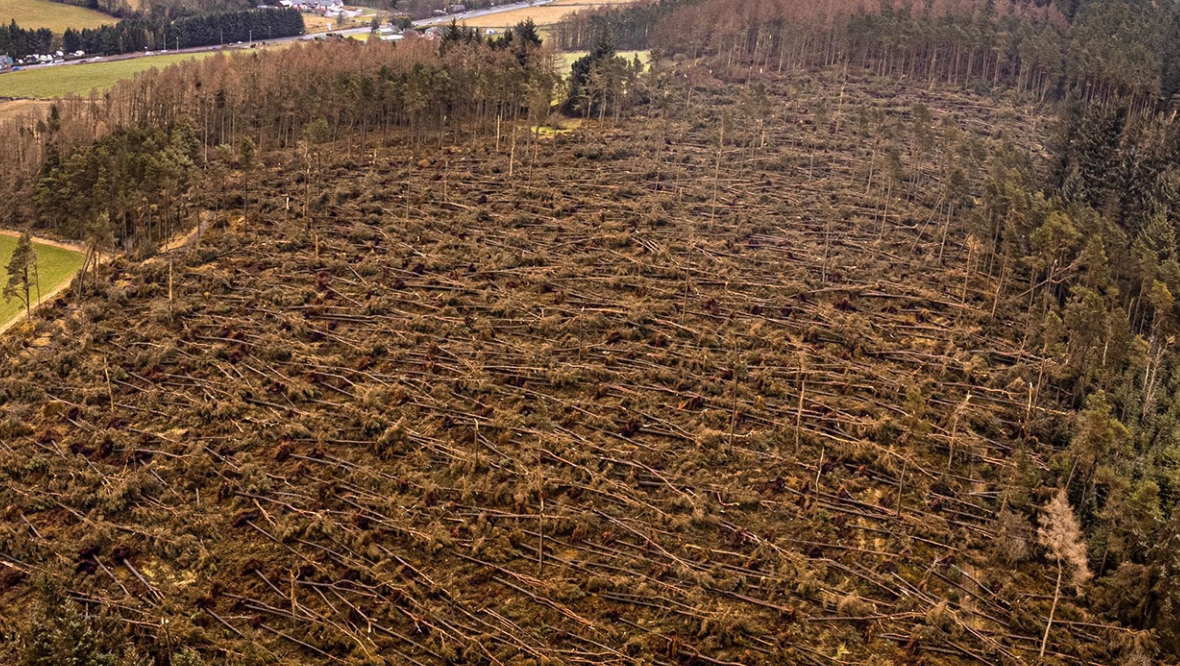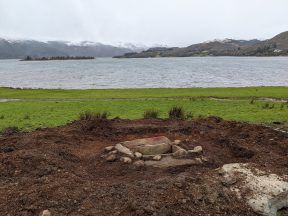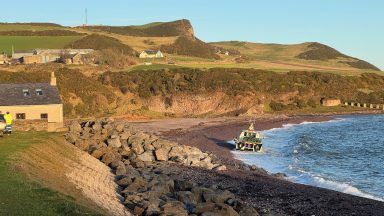Mother nature has helped efforts to restore woodland in Angus to its former glory by blowing over many of the non-native trees destined for the chop, forestry experts have said.
Forestry Land Scotland (FLS) is working to restore a strip of land along the River South Esk and the White Water in Glen Doll, Angus, and to do so needed to spend decades clearing conifers.
But the storms, which battered Scotland in the winter, have done some of the work without a chainsaw in sight.
Gareth Ventress, environment forester at FLS, said: “The recent storms caused havoc in our forests and others, felling hundreds of thousands of trees. It was devastating.
“On this site, however, nature may have done us a bit of a favour. About a third of the conifers have come down during the recent storms.
“We would have gradually removed the conifers over the next 30-40 years to widen and improve the riparian zones. It’s a complex and lengthy process.
“The storms did some of this work for us.
“Once we’ve cleared the felled trees and made the forest safe again, it’s a massive opportunity to speed up our riparian restoration efforts along the River South Esk and White Water and plant more native trees.”
FLS has planted over 6000 native trees along the banks of the burn, known as the riparian zone, to help restore the habitat. The trees are a mix of alder, birch, aspen, bird cherry and hazel.
Next to these new trees is a conifer plantation, a legacy of old forestry practice when commercial crops were grown right up to the edge of waterways.
Mr Ventress said that “species such as otter, brown trout and Atlantic salmon really depend on healthy aquatic and riparian habitats”.
“They also provide the arteries of connectivity throughout a landscape. They link a variety of habitats and provide safe access routes for a range of species, from fast-moving mammals and birds to slow-moving, but equally important and often rare invertebrates, lichens and mosses,” he said.
“Planting native woodland helps keep the water chemistry balanced and provides shade to help regulate the temperature of the water.
“It also provides a food source for fish and animals as falling leaves and insects drop into the water.”
FLS said it planned to switch a further 10,000 hectares of plantation forestry to riparian woodlands over the next 50 years.
Follow STV News on WhatsApp
Scan the QR code on your mobile device for all the latest news from around the country


 Glen Cairns
Glen Cairns
























